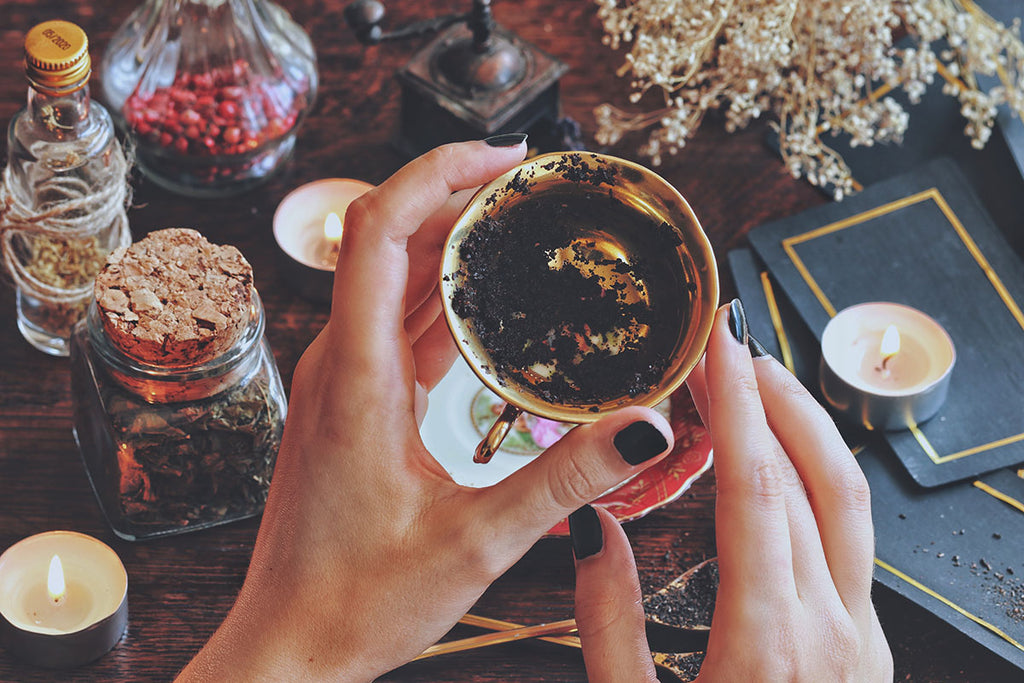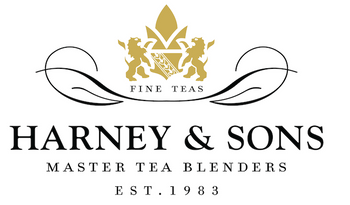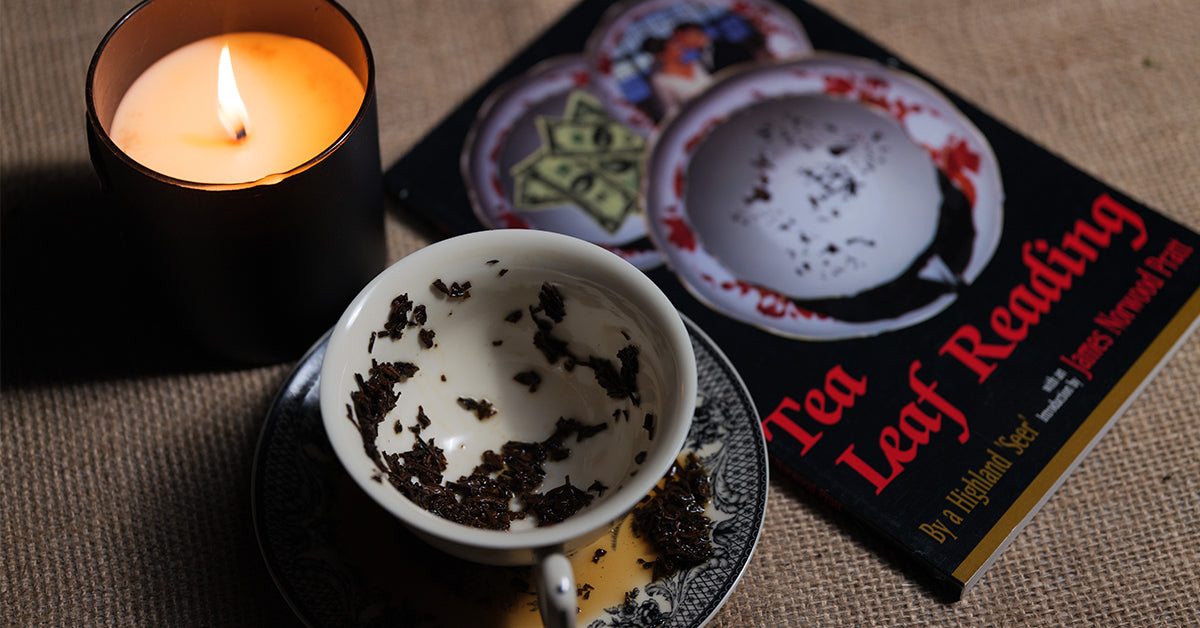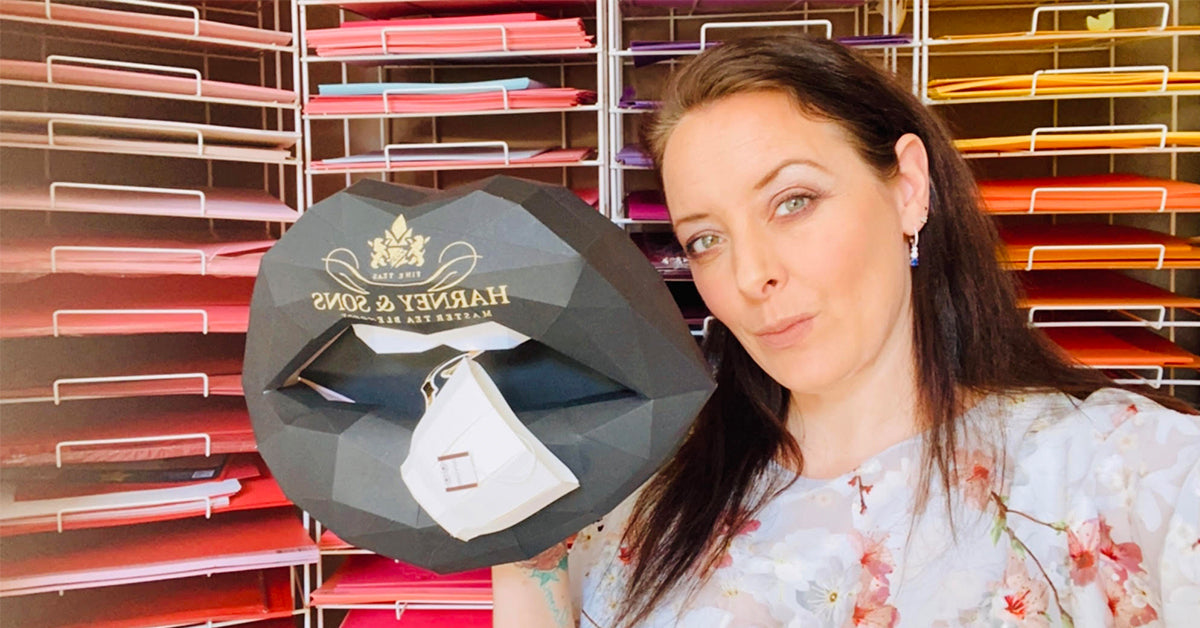In the movie “Harry Potter and the Prisoner of Azkaban,” there is a scene where Harry and his classmates are in Professor Trelawney’s Divination class. The professor announces that they will be learning “tasseomancy, which is the art of reading tea leaves.” She explains as she invites them to look into their friends’ teacups, that “the truth lies therein, like a sentence deep within a book, waiting to be read. But first, you must broaden your minds…”
Whether you take stock in the reading of tea leaves, or if you’re like Hermione Granger in that Divination class scene (“what a load of rubbish!”), we hope this article will help broaden your mind on the topic of tasseography (also called “tasseomancy” and “tasseology”). The word has French and Greek origins, with the French tasse meaning “cup” and the Greek graph meaning “writing.”
Tasseography, or tea-leaf reading, is believed to have been around for nearly as long as there has been tea. According to legend, the practice began in ancient China where friends sat enjoying tea and conversation, as friends still do, when they noticed tea leaves at the bottom of their cups clumped in patterns that looked like objects or symbols that they interpreted as representative of their lives. Through the centuries, the practice has followed tea routes through Asia and Europe and is still alive and well. While tea leaves are traditionally used in tasseography, the art can be practiced using coffee grounds or wine sediment.
Before you gulp down that cuppa in your hand and begin peering into the bottom of your cup trying to understand what your leftover tea leaves are telling you, there are some tips to observe and rules to follow. While it can take a bit of practice before you are an accomplished tea-leaf reader, if you are interested in learning more about this ancient form of divination, read on for some insights.

Loose Tea and the Right Cups
Before you make your tea with the intention of reading the leaves, you need to choose the proper tea for the job. Loose tea is highly recommended rather than cutting open a tea bag and using the tea inside. This is because loose tea leaves are larger than the leaves used in tea bags -- the larger leaves are more suited to forming recognizable symbols and figures at the bottom of a teacup. Avoid using teas with pieces of fruit or flowers as they will obstruct reading the leaves. Some experts advise leaving the milk and sugar in the fridge and cupboard -- just a straight cuppa for tasseography!

Also, when choosing a cup, a white or light-colored cup works best so that the outlines and dots of the tea leaves can be clearly seen. If you’re really interested in the practice of tasseography and want to step it up a notch, there are different sets of cups that are made specifically for reading tea leaves. Three of the most popular:
- Zodiac Cups. Astrological and planetary symbols are contained in these cup and saucer sets, which allows the reader to combine astrology into the reading.
- Playing Card Cups. Want to incorporate some cartomancy with your tasseomancy? “Cartomancy” is divination using playing cards, and these cup/saucer sets with card imagery allow you to mix the two together.
- Symbol Cups. These cup and saucer sets are like having an interpretation cheat-sheet handy. Many of the most common tasseography symbols are incorporated into these sets for handy reference.
While these cup and saucer sets may add some aesthetic or possible interpretive value to your experience, all you need to get started reading tea leaves is a plain white teacup. No fancy equipment required. That said, if you’re looking for something a little fancier than a run-of-the-mill cup or mug, our Spirit teacup and saucer set from our Nouveau series is unique and pretty on the outside, nice and plain white on the inside and has a lovely tea-reading quality to it. In China, a traditional gaiwan cup is very popular for reading tea leaves, as the traditional way to drink tea from a gaiwan includes leaving the tea leaves in the cup rather than straining them out.
Preparing Your Tea
Making a cup of tea with the intention of reading the leaves is about the simplest cuppa you’ll ever make. Simply choose your loose-leaf tea -- any black, green, or oolong tea will do -- and place a teaspoon of the leaves directly into your cup. Add your hot water and let the leaves steep for a few minutes. Leave the tea in the cup -- no need to strain or use an infuser. After all, the leaves are the star of the show!

And Now...the Ritual
As with all good tea ceremonies, there is a ritual to tasseography.
First, you can either read your own tea leaves, or someone else can read them for you. But the leaves being read must be the leaves of the “querent.” This is the person seeking answers. It is important for the querent to clear their mind while drinking the tea and focus on the specific question they have, as general questions will result in more general, vague answers.
If someone else is reading the tea leaves after the querent has finished drinking the tea, that person is called the reader. A querent can also be the reader of their own tea leaves, but if you are not experienced at reading symbols it is best to seek out someone who is a proficient tasseographer.
After drinking the tea and leaving only a small amount of liquid in the bottom of the cup, along with the leaves, the following ritual should be observed:
- Holding the cup in their left hand, the querent slowly swirls the teacup from left to right. The person who is seeking answers to their questions must be the person who does this.
- Still using the left hand, invert the cup onto the saucer. Leave it upside down for around a minute.
- Turn the cup right side up, positioning the handle of the cup due south. Inside the cup, you’ll see tea leaves stuck to the cup in various places and in a variety of shapes.

At this point, the reader will take over. But first, a little background on the importance of the cup and what its various parts and positions signify. Geography matters in tasseography!
- The handle. The teacup handle is the energy conduit that connects the physical and abstract realm and is the “south” point of the compass. It represents the querent -- in astrology, the fourth house, which governs home and family, is also located in this position at the base of the astrological chart. Tea leaves near the handle can represent events relative to the querent’s immediate surroundings; leaves directly across from the handle can symbolize external issues and outside influences. Leaves nearest the handle represent the greatest chance of being fulfilled.
- The rim. This part of the cup represents the present, so leaves in this area indicate a more immediate time frame.
- The sides. This part of the cup represents the near future, events that are not immediate but not too far away.
- The bottom. The bottom of the cup represents the distant future.
Time to Read the Leaves!
At this point, the reader will carefully observe the leaves in the cup, gently turning it to get a good look at the leaves from all angles. If at first this looks like… well, like a bunch of wet tea leaves stuck to the inside of your cup, don’t give up! Reading tea leaves can seem daunting to a beginner, but with practice, you’ll begin to get the hang of it.
 Over the many centuries that tasseography has been practiced, over 150 classic symbols have been cataloged. It takes time and patience to master the art. If you’re really interested in learning how Tea Leaf Reading for Beginners is a helpful resource for getting started. Reading Tea Leaves, authored in 1881 by an unknown author called “A Highland Seer,” is the oldest book written in English on the subject of tasseography and is still considered the definitive book on the art form.
Over the many centuries that tasseography has been practiced, over 150 classic symbols have been cataloged. It takes time and patience to master the art. If you’re really interested in learning how Tea Leaf Reading for Beginners is a helpful resource for getting started. Reading Tea Leaves, authored in 1881 by an unknown author called “A Highland Seer,” is the oldest book written in English on the subject of tasseography and is still considered the definitive book on the art form.
John Harney fell into tea leaf reading. Or maybe he was always destined to be a seer. All we know is that a torn and tattered copy of Reading Tea Leaves (mentioned above) ended up on his desk. John felt the right way to go forward was to involve the "Diviner" of America's tea world: James Norwood Pratt. Norwood foresaw the way the tea would become so popular in the USA. Both of these men saw what others could not. So tea leaf reading makes sense to them.
John loved to read people's tea leaves. He went around and would do it at the drop of a hat. The results were always more positive when they used his tea. His favorite prognostication was: “I see a tall handsome stranger coming into your life."
In general, readers are studying the leaves to look for patterns, symbols, lines, figures. Remember, the position of the leaves in the cup is important to the strength of their meaning. A bad omen can be overshadowed by a good omen in a stronger position in the cup -- and vice versa. Think teacup real estate and what matters most: location, location, location!
When it comes to symbols, there are generally five types: animals, mythical beings, objects, letters, and numbers. Their proximity to one another can also impact the meaning. Letters, lines, and dots also have import. Again, this is an ancient art that takes practice to master. Many tasseographers rely on their instincts, having seen tea leaves in so many variations.
Of the countless symbols possible, here are just some of the more common and their meaning:
- Anchor: prosperity in business and a stable romantic relation. However, if the symbol is cloudy, then it could mean the opposite.
- Birds: good luck, possibly a good journey
- Butterfly: success and pleasure
- Circles: expect money or presents -- bigger circles mean more, smaller circles less
- Clover: very good luck, happiness and prosperity
- Cow: prosperity
- Cross: trouble, delay or death
- Dragon: large and sudden changes
- Fish: good news from another country
- Hammer: challenges overcome
- Heart: good things to come, such as money (if surrounded by dots) or marriage (if with a ring)
- House: business success
- Knife: disaster met through fighting and hatred
- Lines: journey, and the direction of the journey (when reading with nearby symbols); wavy lines mean difficult journeys; straight lines can also mean peace, happiness and a long life
- Mountain: a powerful friend or, if many mountains, powerful enemies
- Mushroom: sudden separation of lovers following a fight
- Pear: wealth, social status, possibly a financially beneficial business move or marriage
- Pig: a faithful lover but jealous friends
- Rabbit: success in a city
- Reptile: arguments
- Scissors: arguments, a break-up or illness
- Sheep: prosperity and success
- Snake: a bad omen, take caution
- Star: good luck; if surrounded by dots, wealth and honor
- Trees: good luck; prosperity and happiness; if surrounded by dots, fortune will be found in the country
- Umbrella: difficulty, annoyance
- Unicorn: scandal
Tasseography experts say that the answers already lie inside you, it’s the practice of opening your mind and being intentional in seeking answers that allow the tea leaves to reveal the answers. Whether you believe in the practice or think it’s “rubbish” is completely up to you. All we know is that we were shocked to learn that unicorns represent scandal! They look so innocent!





7 comments
Patsy
My Grandmother read tea leaves during the depression. I am very interested
in trying this. The first time was perplexing as there was a clump of leaves on the bottom. Your article intrigues me.
Blessings.
My Grandmother read tea leaves during the depression. I am very interested
in trying this. The first time was perplexing as there was a clump of leaves on the bottom. Your article intrigues me.
Blessings.
Bev.
My mother had an aunt who read tea leaves. She would first tell you it was marlarky but then would do a reading. I think most of our family members took it with a grain of salt, but….sometimes the readings were a little too close to the truth!
My mother had an aunt who read tea leaves. She would first tell you it was marlarky but then would do a reading. I think most of our family members took it with a grain of salt, but….sometimes the readings were a little too close to the truth!
Elizabeth Marble
My Mom told me that my Great Grandmother could read tea leaves. I have two teacups that were made for tea reading! I find it very interesting. Nice article. Thank you.
My Mom told me that my Great Grandmother could read tea leaves. I have two teacups that were made for tea reading! I find it very interesting. Nice article. Thank you.
Danica
Wow! I love this post! I’ve always wanted to learn more about reading tea leaves. Such great info. Another reason to drink more tea!
Wow! I love this post! I’ve always wanted to learn more about reading tea leaves. Such great info. Another reason to drink more tea!
Solinna
I always see mountains. Guess I either have powerful friend and powerful enemy.
I always see mountains. Guess I either have powerful friend and powerful enemy.
Sue Scott
Just now read this post! You’ve inspired me. I’m going to give this a try. A fun activity for my tea parties.
Just now read this post! You’ve inspired me. I’m going to give this a try. A fun activity for my tea parties.
Beth
May you always find pigs and sheep in your teacup! Well, not too jealous friends.
May you always find pigs and sheep in your teacup! Well, not too jealous friends.